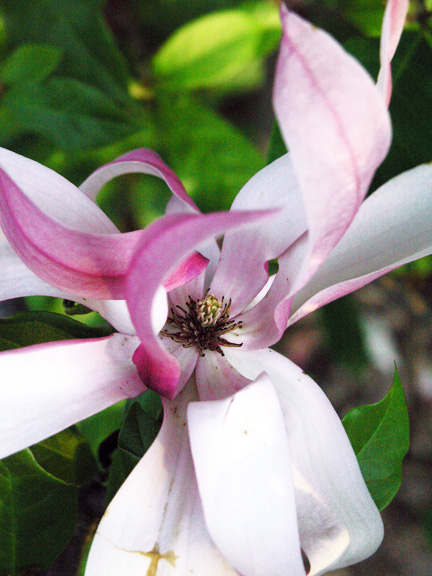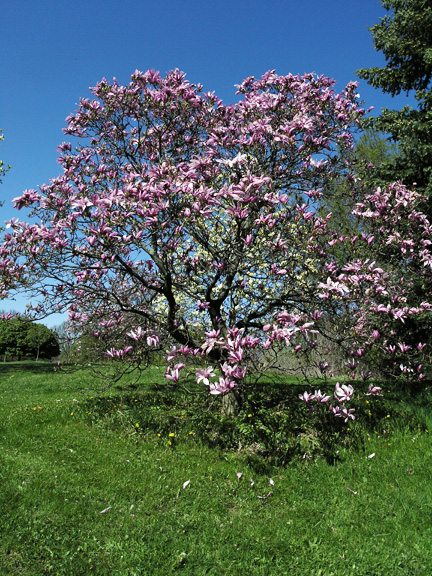
Woody > Magnolia > Magnolia 'Betty'
Magnolia
'Betty'
Betty Magnolia
Origin: In the 1950's, the 'Little Girl Series' of Magnolias was developed at the United States National Arboretum in Washington, D.C., by Francis DeVos and William Kosar. The series includes 'Ann’, ‘Betty’, ‘Jane’, ‘Judy’, ‘Pinkie’, ‘Randy’, ‘Ricki’ and ‘Susan’. Magnolia 'Betty' is a cross between M. liliiflora ‘Nigra’ and M. stellata ‘Rosea’.
| Family |
| Magnoliaceae |
| Genus |
| Magnolia |
| Cultivar |
| 'Betty' |
| Category |
| Woody |
| Type |
| Tree (deciduous) |
| USDA Hardiness Zone |
| 5 - 8 |
| Canadian Hardiness Zone |
| 6 |
| RHS Hardiness Zone |
| H7 |
| Temperature (°C) |
| -4 |
| Temperature (°F) |
| 25 |
| Height |
| 3 - 5 m |
| Spread |
| 3 - 4 m |
Photographs
Description and Growing Information
Flowering Period
| General Description |
| Multi-stemmed tree with interesting cup-like flowers. |
| Landscape |
| As a specimen tree. |
| Cultivation |
| Grown in partial shade to full sun in well-drained acidic, organic, clay based soils. Mulched tree wells are beneficial in protecting its thin bark. |
| Shape |
| Upright to drooping. |
| Growth |
| Medium |
| Pests |
| Canker and scale might be problematic. |
| Bark/Stem Description |
| Smooth glabrous bark with slightly pronounced lenticels and releases a sweet fragrance when crushed. Is thin and easily damaged by construction or machine operations such as lawn mowing. As it matures branches tend to droop touching the ground if left unpruned. |
| Flower/Leaf Bud Description |
| The terminal flower buds are extremely tomentose and are two scaled to 2 cm in length. Vegetative buds are 1/4 the size of the flower buds but are also tomentose and scaled. |
| Leaf Description |
| Alternate, simple, obovate to broad oblong-lanceolate, 7.5 – 15 cm long with a narrow apex and a more or less abruptly short pointed base. Undersides carry a fine pubescence. |
| Flower Description |
| Large showy open-cupped blooms with pronounced, rigid petals measuring between 7 - 10 cm long. |
| Fruit Description |
| Asymmetrical lanceolate-ovate fruits, 10 cm long that mature in August through to September. |
| Colour Description |
| Dull green leaves in the spring and summer turning a full, yellow in autumn. The flowers are reddish-purple on the exterior while the interior is almost white. The bark is light brown maturing to an even grey. |
| Texture Description |
| Medium to coarse. |
| Notable Specimens |
| The Royal Botanical Gardens, Burlington, Ontario, Canada. |
| Propagation |
| Softwood cuttings may be taken in early summer and rooted under mist and bottom heat. Layering of low branches in early spring. |

